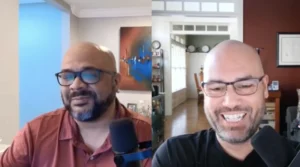5 Tips for Developing Better Customer Listening
Today’s consumers have high expectations for brands, and for good reason, as many companies have mastered the art of customer service and a seamless customer experience. The companies who are best able to do this have one thing in common: they really listen to their customers to find out what people are loving and what needs to be improved.
And not only can becoming a better listener help your customers feel more satisfied, but it also helps ensure your internal team is happy too, something that is especially important in today’s remote working world.
From the CX experts at Chattermill, take a look at the tips below to learn how you can demonstrate empathetic listening in your conversations.
- Focus on Understanding, Not Responding
One of the worst habits you can have is not actually listening to the other person in a conversation because you’re too busy thinking about your response. We all know that one person who doesn’t address the questions at hand and constantly interrupts.
Sometimes this can simply be an issue of nerves if you’re feeling uncertain about sounding smart in your reply. To combat this bad habit, make sure you are fully paying attention to the other person before speaking. It’s actually okay if it takes you a few seconds longer to respond because that shows the other party that you are fully processing what they said.
- Notes Aren’t Everything
Though taking notes is important for remembering specific details, most of the time it’s actually better not to focus on your note-taking during a conversation. Studies have shown that this is because when we type notes, we’re doing something called non-generative recording – that is, typing almost verbatim what the person is saying.
Non-generative recording actually impairs our ability to recall the themes and context of a conversation, because we are so focused on typing instead of listening. If you must take notes, for example, on a client Zoom call, a better alternative would be to handwrite them, as this type of generative recording forces us to use shorthand and simplify statements, which has been shown to be better for remembering concepts.
- Ask Questions
One of the best and easiest ways to show someone you’re listening is to ask them clarifying questions. This demonstrates that you are paying attention enough to grasp what they’re saying and understand where you need more information from them.
For example, if you’re having a conversation with a direct report over the phone, you could make sure to include questions such as “Can you expand on what you mean by that?”, “What can we do to fix the problem you mentioned earlier?”, and “Why do you think you feel that way about X?” These open-ended questions show that you are tuned in and also gives them the opportunity to expand on their thoughts.
- Summarize the Conversation
This point often goes hand-in-hand with the previous tip. Another easy way to convey that you are listening to someone is to repeat their statements back to them, sometimes followed by a clarifying question. This both shows that you were paying attention when they were talking, and also serves to clear up any miscommunication between you.
For example, let’s say you’re talking to a potential new customer about your product lineup. After they tell you what they like and dislike about your products, you could follow up with statements and questions like, “So you think we could improve by making this feature more accessible, is that right?” and “You mentioned that you really like this product, would you say it’s your favorite in our lineup?”.
- Follow up on the Conversation
Continuing once again on the previous point (you can see how these techniques all work together), follow-ups are an important way to “close the loop” on a discussion. Similar to summary questions, follow-ups not only let you make sure that everyone is on the same page after the discussion but also let you demonstrate that you’re taking the feedback to heart and are working on actions to address it.
Follow-ups allow you to communicate to customers that you value their input and that you haven’t forgotten what was talked about. Follow-ups could be in the form of emails or wider announcements to your community at large via social media posts and site announcements.
In addition to the five tips outlined above, take a look at the art of listening infographic below for additional points on how to improve conversations with your customers and team members.






